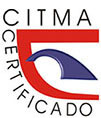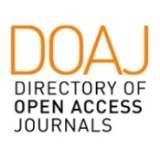Diglossia in the Caribbean: the current situation of Saint Kitts
Keywords:
caribbean creole, diglossia, languages in contactAbstract
Introduction: The study of Creole on the Caribbean island of St. Kitts is essential, since the basic characteristics of Creole have not been studied. This article aims to determine, from a sociolinguistic perspective, the functional characteristics of Creole currently spoken on the island.
Methods: We worked with a sample of 20 native informants of the island and applied questionnaire techniques on attitudes and realities of contexts where Creole is or is not used. The linguistic attitudes of Creole and the variables gender, age and level of education were taken as fundamental elements.
Results: It was found that there is a negative attitude towards Creole, which gives rise to a situation of marked diglossia in favor of English. On the other hand, certain modifications were observed at all levels, which demonstrates the existence of Creole and the need to create a language policy that attenuates the diglossia in favor of English.
Conclusions: A current contradiction is evident as a result of centuries of linguistic struggle: Creole, on the one hand, is used in orality and in popular traditions such as songs, jokes and stories, in the street and in domestic settings, on the other hand, it is externally rejected in «cultured» settings and considered of lesser linguistic and social value.
Downloads
References
ALMEIDA, M. A. (1972). Fonología histórica del papiamento. Tesis Doctoral. Ottawa: Universidad de Ottawa.
ARENDS, J. (1995). The socio-historical background of creoles. En J. ARENDS, P. MUYSKEN Y N. SMITH (EDS.). Pidgins and Creoles. John Benjamins, 15-24.
BAKER, P. (1995). Pidgins. En J. ARENDS, P. MUYSKEN Y N. SMITH (EDS.). Pidgins and Creoles. John Benjamins, 25-41.
BICKERTON, D. (1976). Pidgin and Creole Studies. Annual Review of Anthropology, 5: 169-193.
BURNARD, T. (2010). British West Indies and Bermuda. En SMITH, MM (ED), PAQUETTE, RL (ED), The Oxford Handbook of Slavery in the América. Oxford University Press.
DE GRANDA, G. (1968). Sobre el estudio de las lenguas «criollas» en el área lingüística. Centro Virtual Cervantes (Núm 1): 1-11. Recuperado de https://cvc.cervantes.es/ lengua/thesaurus/pdf/23/TH_23_001_064_0.pdf
FERGUSON, CH. (1959). Diglossia. Word, Vol. 15: 325–340.
FISHMAN, J. (1972). Sociología del lenguaje. Cátedra.
GALARZA BALLESTER, M. T. (2014). La criollización y la adquisición del sistema verbal en haitiano, jamaicano y papiamento. Lexis, 38(2), 337-374.
GARCÍA LEÓN, D. L. (2011). Las lenguas criollas del Caribe: orígenes y situaciones sociolingüística, una aproximación. Forma y Función, 24 (2): 41-67.
GOODMAN, M. (1964). A Comparative Study of Creole French Dialects. The Hague: Mouton.
HOLM, J. (2000). Introduction to Pidgins and Creoles. USA: Cambridge University Press.
JOSEPH, P. (1984-85). Estudio de la estructura verbal del creole hablado en Dominica (Tesis de pregrado). Universidad Central «Marta Abreu» de las Villas, Santa Clara, Villa Clara, Cuba.
LASTRA, Y. (1992). Sociolingüística para hispanoamericanos, una introducción. El Colegio de México.
MORENO FERNÁNDEZ, F. (2008). Principales de Sociolingüística y de Sociología del lenguaje. Editorial Ariel.
MORRIS, V. (2005). La influencia lingüística del francés en el habla de San Cristóbal (Tesis de pregrado), Universidad de Oriente, Santiago de Cuba, Cuba.
MUYSKEN, P. (1995). The study of pidgin and creole languages. University of Amsterdam.
National Museum Liverpool (2020). The archeology of Slavery. Slavery in the Caribbean. Recuperado de https://www.liverpoolmuseums.org.uk/slavery-caribbean.
VALDMAN, A. (2015). Haitian Creole. Sheffield, UK: Equinox Publishing Ltd.
WEINREICH, U. (1953). Languages in Contact. De Gruyter.
Downloads
Published
How to Cite
Issue
Section
License
Copyright (c) 2023 Gema del Carmen Valdés Acosta, Quan Nitsche

This work is licensed under a Creative Commons Attribution-NonCommercial 4.0 International License.
Usted es libre de:
Compartir — copiar y redistribuir el material en cualquier medio o formato
Adaptar — remezclar, transformar y construir a partir del material
La licenciante no puede revocar estas libertades en tanto usted siga los términos de la licencia
Bajo los siguientes términos:
Usted es libre de:
Atribución — Usted debe dar crédito de manera adecuada, brindar un enlace a la licencia, e indicar si se han realizado cambios. Puede hacerlo en cualquier forma razonable, pero no de forma tal que sugiera que usted o su uso tienen el apoyo de la licenciante.
NoComercial — Usted no puede hacer uso del material con propósitos comerciales.
No hay restricciones adicionales — No puede aplicar términos legales ni medidas tecnológicas que restrinjan legalmente a otras a hacer cualquier uso permitido por la licencia.



















